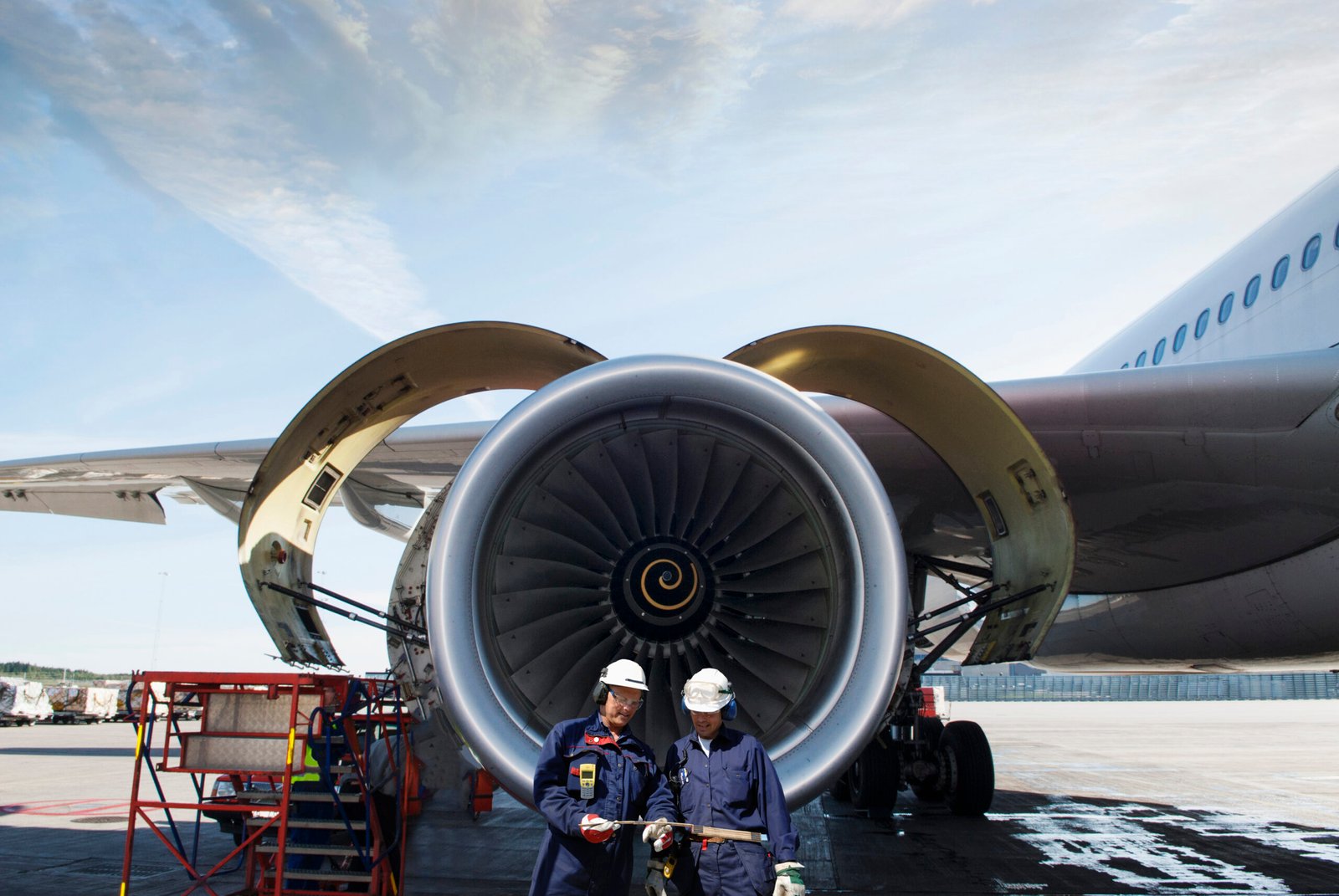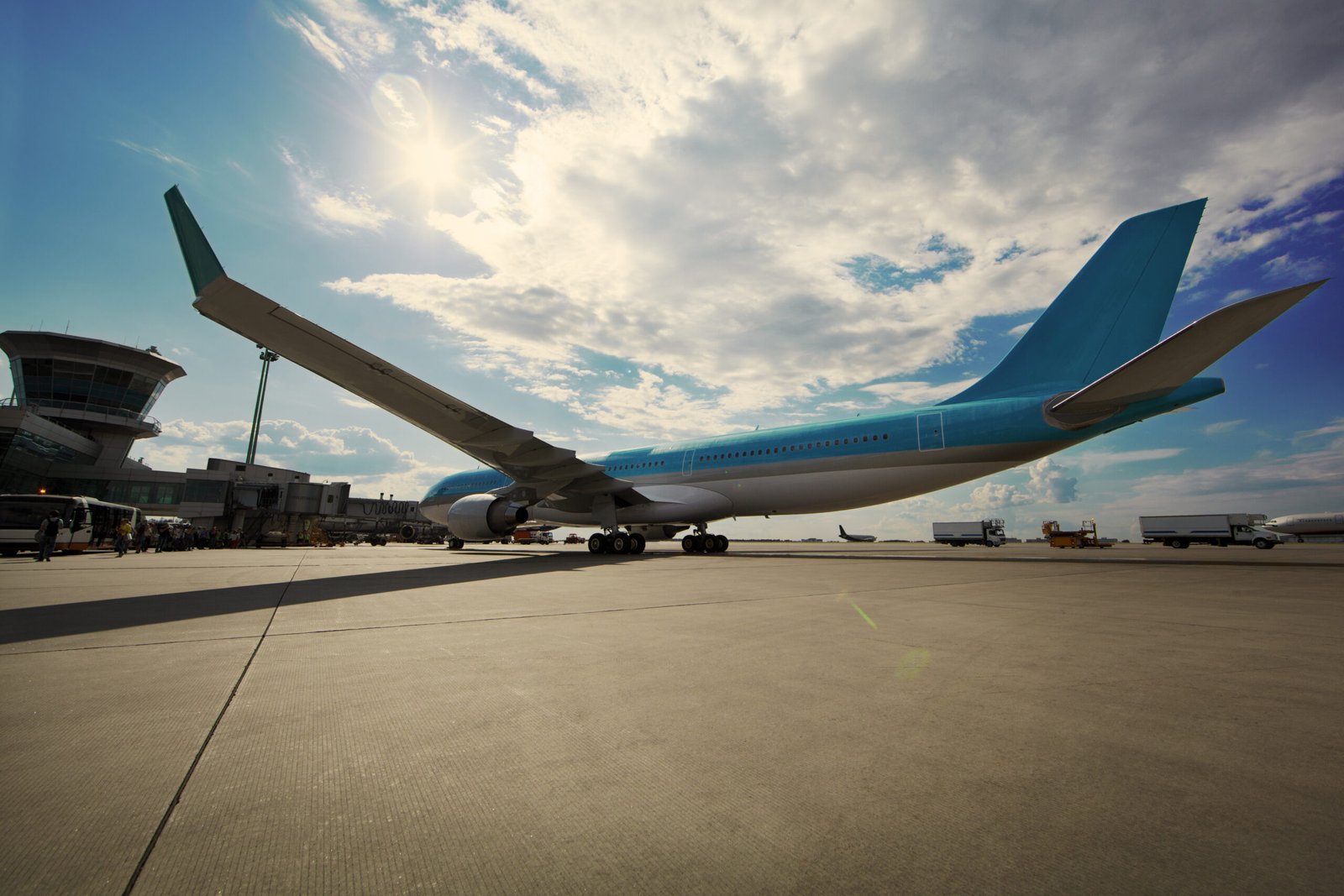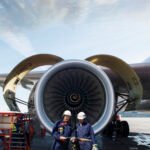Aviation Social Media
Behind the Cockpit: A Day in the Life of a Pilot
Ever wondered what it’s like to soar through the skies, navigating vast expanses of blue? For many aspiring aviators, the journey begins not in the clouds but in classrooms and simulators across the country. Aviation schools offer a variety of courses designed to equip future pilots with essential skills and knowledge. From ground school to flight training, these programs come in different flavors tailored to meet diverse needs.
Aviation schools typically provide several types of courses. **Private Pilot License (PPL)** programs allow students to learn the basics of flying and gain their first certification. Next up is the **Instrument Rating**, which trains pilots to fly under instrument flight rules – crucial for navigating through clouds and poor visibility. For those aiming for commercial aviation careers, a **Commercial Pilot License (CPL)** course is vital, providing deeper insights into advanced flying techniques, navigation systems, and aircraft operations. Additionally, aspiring airline pilots often pursue an **Airline Transport Pilot (ATP)** certificate, which requires extensive flight hours and knowledge about complex aircraft systems.
Beyond traditional classroom instruction, modern technology plays a pivotal role in pilot training. Flight simulators have revolutionized how trainees experience aviation without leaving solid ground. These realistic setups mimic various aircraft scenarios, allowing students to practice emergency procedures and navigation techniques safely. FAA-approved flight schools incorporate simulators into their curricula to enhance learning outcomes while ensuring compliance with regulatory standards.


While educational institutions lay the groundwork for budding aviators, connecting with fellow enthusiasts can further enrich one’s aviation journey. Numerous blogs and websites curate valuable information on current trends, tips for aspiring pilots, industry news, and personal experiences that can inspire newcomers.
Some popular aviation blogs include **Airways Magazine**, which covers everything from aircraft reviews to travel stories; **The Aviation Herald**, dedicated to safety incidents; and **Flying Magazine**, offering practical advice on flying techniques. Websites like **PilotJourney.com** serve as rich resources for aspiring pilots seeking guidance on flight paths—figuratively speaking—and career options within aviation.
Social media has also become an incredible platform for sharing information within this community. Platforms like Instagram feature accounts such as @pilotlife and @aviationphotography that showcase stunning aerial shots alongside captivating pilot stories. On Facebook, groups like “Aviation Enthusiasts” provide spaces where individuals share experiences or seek advice about training programs or specific aircraft.
As you navigate your path toward becoming a pilot or simply indulge your love for aviation from afar, tapping into these resources will prove invaluable. The world of aviation extends beyond flight; it encompasses shared experiences among passionate individuals dedicated to mastering the skies.
In conclusion, embarking on a career as a pilot involves more than just logging hours in the cockpit; it requires dedication towards education through various aviation courses offered at specialized schools across America. With robust support networks found through blogs and social media channels alike fostering connections among aviators everywhere—from novices eager to learn all they can about flying—to seasoned professionals sharing their wisdom—the sky’s truly not the limit! So buckle up; your adventure awaits!
From Runways to Skies: The Evolution of Air Travel
The world of aviation has evolved at an incredible pace, transforming from the dream of flight into a thriving global industry. With this growth comes the need for skilled professionals who understand every nuance of air travel. Whether you’re aspiring to become a pilot, aircraft technician, or air traffic controller, aviation schools offer a variety of courses tailored to meet these demands.
Aviation schools can be categorized based on the types of courses they provide. Firstly, there are **pilot training programs**, which encompass everything from private pilot licenses (PPL) to commercial pilot licenses (CPL) and even airline transport pilot licenses (ATPL). These courses typically combine ground school instruction with practical flight training using both real aircraft and simulators.
Next up are **aircraft maintenance programs**, where students learn about the technical side of flying. Here, aspiring mechanics dive into subjects such as airframe systems, powerplants, and avionics. These programs prepare graduates for critical roles in ensuring aircraft safety and reliability.
Another vital area is **air traffic control training**. This course emphasizes navigation procedures and communication protocols essential for managing the busy skies above us. The curriculum focuses on developing quick decision-making skills and understanding complex air traffic scenarios.
Lastly, there are specialized courses in fields like **aeronautical engineering** and **aviation management**, which cater to those interested in designing aircraft or managing aviation operations respectively. This diversity in educational paths equips students with the necessary skills to succeed in various facets of the aviation industry.
As one embarks on their journey through aviation education, staying informed about trends and developments is crucial. Luckily, numerous blogs and websites offer rich content dedicated to air travel enthusiasts and professionals alike. Some noteworthy mentions include:
1. **AirlineReporter.com** – A blog that explores current happenings in the airline industry while providing insights into new technologies.
2. **FlyingMagazine.com** – A staple for pilots offering articles on flying techniques, gear reviews, and personal stories from aviators.
3. **Plane & Pilot Magazine** – Covering everything from flying tips to product reviews; it’s an informative resource for pilots at any level.
4. **The Points Guy (TPG)** – While primarily focused on travel points maximization, TPG often covers aviation news relevant to frequent flyers.
5. **FlightAware Blog** – This platform offers a deep dive into real-time flight tracking data along with analysis on trends impacting airlines.
In addition to blogs, social media platforms serve as excellent resources for networking within the aviation community. Twitter accounts such as @AviationWeek keep followers updated on industry news while Instagram profiles like @pilotlife showcase breathtaking aerial views that inspire many aspiring pilots.

For those looking specifically at FAA-approved flight schools or simulators, there’s no shortage of options across the United States that adhere strictly to federal guidelines ensuring quality training experiences. Notable names include:
**Embry-Riddle Aeronautical University** – Renowned for its comprehensive curriculum spanning all aspects of aviation.
**ATP Flight School** – Focused primarily on accelerated pilot training designed for those eager to enter commercial flying swiftly.
**CAE Global Academy** – Offers high-fidelity simulator training alongside actual flight time experiences.
Simulators have revolutionized pilot training by providing realistic scenarios that enhance learning without risk factors associated with live flights. From basic maneuvers to emergency response drills, these tools empower future aviators with confidence before they take off into the skies.
In conclusion, as we reflect upon how far air travel has come since its inception—from wooden biplanes skimming runways to ultra-modern jets soaring through clouds—it’s clear that education plays a pivotal role in shaping its future trajectory. With a plethora of resources available today—from diverse course offerings at aviation schools to insightful online communities—there’s never been a better time to embark on an aerospace adventure!
Flight Patterns: The Fascinating Evolution of Air Travel Through the Decades
Aviation, an industry that has revolutionized the way we traverse our planet, has undergone a remarkable transformation over the decades. From its humble beginnings in the early 20th century to today’s advanced technologies and training programs, air travel continues to evolve. One aspect that stands out in this evolution is the education and training of aspiring aviators. With various aviation schools offering specialized courses, enthusiasts can now navigate their way into a sky-high career.

When it comes to aviation education, there are several types of courses available tailored to different interests and career paths. For those aiming to become pilots, flight training schools provide comprehensive programs ranging from Private Pilot Licenses (PPL) to Airline Transport Pilot Licenses (ATPL). These courses cover everything from basic aerodynamics and meteorology to complex navigation techniques. Additionally, aspiring mechanics can enroll in Aircraft Maintenance Engineering programs that delve into aircraft systems, repairs, and regulatory compliance.
For individuals interested in air traffic control or aviation management, specialized courses are offered at various institutions. Air Traffic Control programs focus on communication protocols and safety regulations essential for maintaining order in busy airspaces. Similarly, Aviation Management degrees encompass business principles applied specifically within the aviation sector—preparing students for roles in airport operations or airline management.
Beyond formal education, numerous resources exist online for those seeking knowledge about aviation trends and news. Blogs like “The Points Guy” offer tips on maximizing travel rewards while providing insights into airlines’ latest offerings. Websites such as FlightAware allow users to track real-time flights globally—a fascinating tool for both enthusiasts and professionals alike.

Social media platforms have also become invaluable for aviation aficionados. Instagram accounts like @aviationdaily showcase stunning imagery from around the world—capturing breathtaking views of airplanes in flight or ground handling operations. Twitter hashtags such as #AvGeek unite individuals who share a passion for all things airborne; it’s a community where one can exchange experiences or learn about upcoming events.
In addition to traditional flight schools, FAA-approved flight training centers have gained prominence across the nation. These certified facilities adhere strictly to Federal Aviation Administration regulations while providing top-notch training using state-of-the-art simulators alongside actual flight experiences. Simulators play an integral role in modern pilot education by allowing students to practice emergency scenarios without jeopardizing safety. This innovative approach enhances skill development while building confidence before stepping into an actual cockpit.
Moreover, many FAA-approved flight schools offer programs designed for every level—from beginners taking their first lessons to seasoned pilots looking to upgrade their certifications or ratings. Each program is crafted with rigorous standards ensuring graduates are well-prepared for their careers ahead.
As we look back through decades of progress within air travel—from wooden biplanes soaring above fields to sleek jets cruising at high altitudes—it’s evident that ongoing education remains crucial for anyone wishing to soar in this dynamic field. Whether you’re passionate about piloting planes or fascinated by managing airport operations, today’s diverse array of aviation courses equips learners with necessary skills while connecting them with vibrant communities eager to share insights along their journey through the skies.
Embrace your inner aviator; explore these educational avenues and resources as you chart your own course through the thrilling world of aviation!
Cloud Computing in Aviation: How Technology is Transforming Air Travel
In an industry that thrives on innovation, cloud computing has emerged as a game-changer for aviation. This technology not only enhances operational efficiency but also redefines how airlines interact with passengers and manage resources. As we soar into the future of air travel, it’s crucial to explore the intertwined realms of education, communication, and training within aviation.
*Aviation Schools by Types of Courses**
For aspiring pilots and aviation professionals, choosing the right educational path is paramount. Aviation schools offer a variety of courses tailored to different aspects of the industry. These can be broadly categorized into:
1. **Pilot Training Programs**: These courses prepare students for their FAA certifications, including Private Pilot License (PPL), Commercial Pilot License (CPL), and Airline Transport Pilot License (ATPL). They cover essential topics such as flight theory, navigation, meteorology, and hands-on flight training.
2. **Aviation Management Courses**: Focusing on the business side of aviation, these programs delve into airport operations, airline management, and logistics. Students learn about regulatory compliance and strategic planning vital for running successful aviation businesses.
3. **Aerospace Engineering**: For those intrigued by aircraft design and maintenance, aerospace engineering programs provide in-depth knowledge about aerodynamics, materials science, and structural analysis.
4. **Air Traffic Control Training**: Specialized courses prepare individuals to manage aircraft flow in busy airspace environments efficiently while ensuring safety.
Each course type offers unique insights into various fields within aviation – paving the way for a well-rounded skill set in this dynamic sector.
*Lists of Aviation Blogs, Websites, Social Media Sites**
Staying updated with trends and developments in aviation requires reliable sources of information. Several blogs and websites are dedicated entirely to this field:
**Airline Reporter**: An excellent resource for news related to airlines’ operations along with reviews.
**The Points Guy**: Focuses on maximizing travel rewards through credit cards while providing insights on airlines’ loyalty programs.
**FlightGlobal**: Offers a comprehensive overview of aviation news covering everything from commercial flights to military developments.
**Simple Flying**: A blog that captures daily happenings in commercial aviation with engaging articles.
Social media platforms are also rich with content from influencers and experts alike:
On Twitter, you can follow accounts like @flightradar24 or @airlinesdotnet for real-time updates.
Instagram features stunning aerial photography from enthusiasts using hashtags like #aviationlovers or #pilotlife.
Engaging with these platforms enriches your understanding while connecting you to a vibrant community passionate about flying.
*FAA Flight Schools/Airplane Schools/Simulators**
When it comes to obtaining necessary flight training credentials under FAA guidelines, numerous reputable flight schools exist across the country. Institutions like Embry-Riddle Aeronautical University or ATP Flight School stand out due to their robust curricula focusing on both practical flying skills and theoretical knowledge.
Additionally, many schools now offer advanced simulators that replicate real-world flying scenarios without leaving the ground. These state-of-the-art devices allow students to practice maneuvers safely before stepping into an actual cockpit—a significant boon considering safety protocols in today’s fast-paced environment.

With cloud computing facilitating data sharing among these institutions—such as enhancing simulator technology—the future looks promising for aspiring aviators. Not only does technology streamline operations; it fosters an interconnected global community eager to learn from each other’s experiences.
In conclusion, cloud computing’s influence permeates every layer of air travel—from education through online resources down to practical training methods—all working together toward creating safer skies for everyone involved. Embrace this transformation; it’s just taking off!
From Propellers to Jets: A Journey Through Aviation History
The history of aviation is a remarkable tapestry woven from innovation, determination, and the innate human desire to conquer the skies. From the first wood-and-canvas biplanes that sputtered across fields to the sleek, high-speed jets soaring at 30,000 feet, aviation has evolved dramatically over the decades. This evolution continues today with an array of educational pathways for aspiring aviators and enthusiasts alike.
When it comes to pursuing a career in aviation, several types of courses are available at various aviation schools. For those captivated by the mechanics of flight, there are programs specializing in aircraft maintenance and engineering. These courses delve into aerodynamics, propulsion systems, and avionics—essential knowledge for keeping aircraft safe and operational.
For future pilots, flight training is paramount. Many schools offer private pilot licenses (PPL), instrument ratings (IR), commercial pilot licenses (CPL), and even airline transport pilot (ATP) certifications. Each course builds on practical skills and theoretical knowledge needed for safe navigation through diverse flying conditions. Additionally, specialized instruction in areas like helicopter piloting or glider operation provides niche opportunities for those looking to diversify their skill set.
Moreover, universities often integrate aviation management programs that combine business principles with aviation regulations, preparing students for leadership roles within airlines or airport operations. With such a wide range of options available, prospective students can tailor their education according to their passions within this dynamic field.
As one embarks on this journey through aviation education, staying informed about industry trends and insights is crucial. Fortunately, numerous blogs and websites cater to both professionals and enthusiasts alike. Some notable aviation blogs include “AirlineReporter,” which covers news on airlines’ latest innovations; “Flying Magazine,” which offers advice on flying techniques; and “AeroSavvy,” focusing on pilot training resources.
Social media platforms also serve as fantastic conduits for connecting with fellow aviators. On Instagram or Twitter, accounts like @pilotlife showcase breathtaking aerial snapshots while providing relatable content about daily life as a pilot. Meanwhile, Facebook groups dedicated to specific aircraft models or flying experiences create vibrant online communities where members share tips and stories.
For those seeking formal education or practical experience in flight operations specifically within the United States framework, FAA-approved flight schools are indispensable resources. The FAA maintains rigorous standards ensuring that accredited institutions provide comprehensive training covering all aspects of piloting—from theoretical coursework to hands-on flight experience using state-of-the-art simulators.
These simulation technologies have revolutionized pilot training by offering realistic environments where students can practice maneuvering without risks associated with real-life scenarios. They allow learners to familiarize themselves with cockpit instruments while engaging in emergency procedures under controlled settings—a critical component in building confidence before taking control of actual aircraft.

In summary, from propeller-powered pioneers like the Wright brothers to today’s advanced jets capable of crossing continents swiftly—aviation history is filled with milestones that inspire countless individuals worldwide. By exploring varied educational paths through specialized courses at aviation schools while leveraging contemporary resources like blogs and social media platforms—future aviators are well-equipped not only to understand but also contribute actively to this ever-evolving industry that has captured our imaginations since time immemorial.





